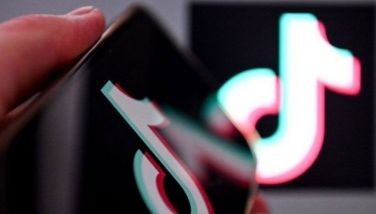Better implementation of digital solutions

If there is one thing this pandemic has taught us, it is that we have to be flexible and agile with how we do things. We can no longer rely on just one tried-and-tested way of living. We have to be able to turn on a dime and recreate ourselves to keep going and survive in a world where physical human contact is no longer a viable first option. This means, being open and willing to implement, learn, and utilize digital solutions.
While I believe that social contact and human connection are both vital to living a good life and not just surviving, the truth of the matter is that at this particular moment that is just not safely possible. Hopefully, this won’t be the case forever. Medical experts and scientists are working round the clock to come up with a vaccine, but until that happens we have to keep socially distant and limit contact as much as possible.
For the Philippines, this has been especially difficult. Not only do we have such a large population, but here in Metro Manila, in particular, that population is always in close contact. Whether it’s in packed offices, full restaurants, at capacity malls, or filled to the brim public transportation, it’s almost a trademark of Filipinos that we are always so tightly packed together.
All that has changed during the pandemic and for once – for our safety and health – we have to stay away from one another. This presented unique challenges in almost every aspect of life. Suddenly we couldn’t get to work, we couldn’t do our work properly, and so much more. While some Filipinos did their best to quickly pivot to a new way of life, the majority are still stuck in the old way, trying desperately to make it work.
Now, more than ever, we need new ways of doing things. We need to utilize innovations and technology to limit human contact (for the time being at least) and allow us to accomplish our daily tasks – work, commuting, etc. While these digital solutions may not be what we are used to, we need to recognize that they will only benefit us in the long run and give us options on how to safely live our lives.
A good example of this is how quickly the pandemic boosted the online ordering and delivery services. While these were already used pre-pandemic, clients have skyrocketed in the past several months. Today, most of us buy everything online – from groceries to clothes to toys. It makes it easier, limits our exposure to other people, and gives us the convenience of having these items brought right to our doorstep.
Other innovations in the queue for implementation are providing more cashless transaction options. These include promoting the use of cashless payment channels like bank apps, GCash, and Paymaya. While these are still relatively new concepts, especially to older citizens, they are good ways to limit exposure by limiting the amount of money being touched and exchanged.
In terms of transportation, by month’s end drivers will no longer have the option of paying for their toll in cash. They will have to use the cashless prepaid toll system if they want to traverse the expressways. Along the same vein, commuters will soon have to use a Beep card for commuting instead of paying cash daily for their rides.
While I understand that this shift is necessary, it’s also quite scary for a lot of people who are used to the old way of doing things. In general, we’re not very good with change and every major change like this just feels more and more like we are never going back to the normal we once knew. It’s understandable for Filipinos to be scared and to even fight against it, but we all have to make sacrifices now in the name of health and safety.
However, I do believe that while digital solutions are necessary and important, there has to be better ways to implement them. I think that the Beep card was a good idea, but the way that it was implemented was a bit sudden and didn’t fully inform people of the change and how it would impact their lives. On Oct. 1st commuters were just surprised to find that they had to pay an additional P80 on top of their fare and that these cards would be different for buses, MRT, and LRT. That was an awful lot to take in.
I believe that this should have been anticipated from the start and a slower more informative rollout would have been beneficial. Educate commuters on the changes, why these changes are being made, and give them time to adjust and recalibrate before complementing it. Hopefully, the President’s plan to give the cards for free comes to fruition because day workers can barely afford the day’s meals, let alone Beep cards.
Additionally, I hope they can consolidate the cards for all forms of public transportation. I don’t see why they have to be different for each one. A consolidated payment card would be much easier. Finally, I hope they find a way around the required balance to keep the card active. For daily wage earners, having money in their cards just to keep them active is a luxury not many can afford.
We are moving at breakneck speed into new digital territory and while it’s necessary, it can be terrifying for everyone. We need to find ways to implement new systems so that everyone understands and no one gets left behind.
- Latest
- Trending




























